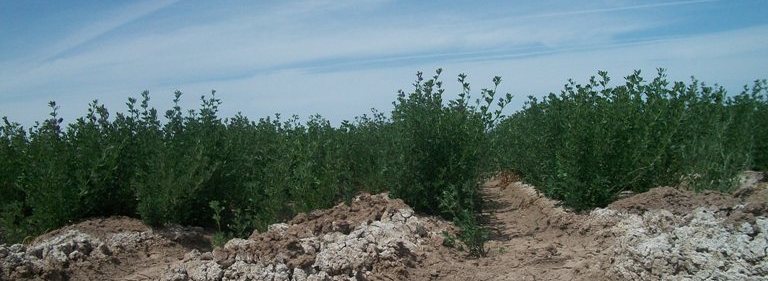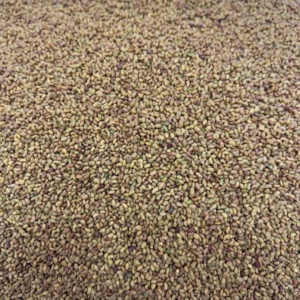Alfalfa Seed / بذور العلفة
In the alfalfa market, MK has teamed with one of the best alfalfa seed growers in the USA & Europe to provide our own variety of MK 101 Non-Dormant Alfalfa seed (9- 11) and other Dormant & Non-Dormant varieties.
From Italy 🇮🇹 we work with the best and largest Alfalfa seed company in Europe . A company that has and works with state of the art sorting, cleaning and coating machines
MK has a 17-year track record of 100% success with our alfalfa seed in numerous parts of the world. All of our seeds are 100% guaranteed.
We can export Alfalfa seeds from:
USA, AUSTRALIA, CANADA, SPAIN, ITALY, FRANCE
متوفر للتصدير بذور العلفة / برسيم من الدول الاتية
امريكا ، أستراليا ، كندا ، اسبانيا ، ايطاليا ، فرنسا
Alfalfa Superior Forage
Alfalfa Superior Forage: Across the World, farmers and ranchers value alfalfa for its superior quality as forage. In the U.S Alfalfa is grown on over 21 million acres, and is worth $8 billion per year (not including the value of final products, such as dairy products). It is the third most valuable crop to U.S. agriculture. Alfalfa is the fourth most widely grown crop behind corn, soybeans, and wheat. While alfalfa is primarily used in feed for dairy cows and beef cattle, it also greatly contributes to Goat, lamb, sheep, horse, and camel grown for milk, and honey production because of its low fiber and high protein content.

Why is Alfalfa a perfect food for Dairy Animals?
- High nutrient content.
- High content of protein and Minerals.
- High in Fiber.
- Good digestibility.
- Supports high milk production.
- Most important cows like it.
Alfalfa Hay Exports
Most U.S alfalfa is used as domestic animal feed, while 5% is exported. 75% of these exports are bought by Japan, and the rest is shipped to Korea, Taiwan, Mexico, Middle East, and North Africa. Alfalfa is one of the most important legumes used in agriculture. It is widely grown throughout the world as forage for cattle, and is most often harvested as hay, but can also be made into silage, grazed, or fed as green chop. Alfalfa has the highest feeding value of all common hay crops, being used less frequently as pasture. When grown on soils where it is well-adapted, alfalfa is the highest yielding forage plant. Its primary use is as feed for dairy cattle—because of its high protein content and highly digestible fiber—and secondarily for beef cattle, horses, sheep, camel, and goats.

Alfalfa Seed & Soil
Like other legumes its root nodules contain bacteria, Sino rhizobium meliloti, with the ability to fix nitrogen, producing a high-protein feed regardless of available nitrogen in the soil. Its nitrogen-fixing abilities (which increase soil nitrogen) and its use as an animal feed greatly improved agricultural efficiency. (The nitrogen comes from the air, which is 78 percent molecular nitrogen.) Alfalfa can be sown in spring or fall, and does best on well-drained soils with a neutral pH of 6.8 – 7.5. Alfalfa requires a great deal of potassium to grow well. It is moderately sensitive to salt levels in both the soil and in irrigation water. Soils low in fertility should be fertilized with manure or a chemical fertilizer, but c correction of pH is particularly important. Scientist recommends crop rotation for better use of the land and for higher production. Alfalfa is the favorite for crop rotation for many reasons such as:
– Adds nitrogen via biological fixation.
– Improves water infiltration and soil quality.
– Reduces soil erosion from wind and water.
– Improves yield of subsequent crop.
– Reduces N fertilizer demands of subsequent crop.
– Helps protect surface and ground water.
Alfalfa Seed Rates
There are about 199,000 alfalfa seeds per pound. Usually with good soil conditions the following planting rates are generally applied:
1) Broadcasting method, 20-25 pounds per acre (22-28 Kg Ha), Broadcasting is usually done on a flat field, by a sprayer or a spreader machine. The ground is usually lightly raked beforehand.
2) Drilled method, 15-20 Pounds per acre (17-22 Kg/Ha), Drilling is usually done by a machine into the ground, one seed at a time at an even distance. This method is very precise and cost effective. With some advanced machine one can get as low as 3 pounds per Acre.
The above measurements are recommended, with differences based upon region, soil type, and seeding method. A nurse crop is sometimes used, particularly for spring plantings, to reduce weed problems. Herbicides are sometimes used in place of the nurse crop. The above numbers should result in 20-50 plants per square foot one month after seeding. With proper management, yields will generally be around 8-10 dry tons per acre. But yields have been recorded up to 20 t/ha (16 short tons per acre). Yields vary with region, weather, and the crop’s stage of maturity when cut. Later cuttings improve yield but reduce nutritional content. More info on Alfalfa seeding rate: Click here
Dormant Vs. Non-Dormant Alfalfa Seed
MK Agriculture specializes in the non-Dormant 9-10 Alfalfa seed. This is a special breeding of seed and a mix that has proven to be a great success in the US, Middle East, North Africa and around the world. This mix is not genetically modified nor does it have any chemicals in it. In the past most seed varieties are either a non-Dormant 4 or a 5 with most going dormant in the winter and not being active. By planting a very winter active variety (9-10) a grower will benefit from more forage in the winter as the plants will remain active during more months of the year. The Non- winter active seed will cost a farmer in terms of annual hay production. The only disadvantage for using a winter active (non-Dormant 9-10) seed is if planting was done in an area that is out of its adaptation, such as in the highlands or in areas where freezing winter temperatures could damage some of the plants. Our winter active 9-10 seed is perfectly suited for intensely farmed hay production operations in Mexico, Middle East, North Africa or anywhere else where this variety is best suited. With our variety, farmers are able to get up to 9-10 cuts a year for up to 3-5 years if proper land techniques are used. In comparison the Italian and the Spanish seed are only a variety 4-5 and not a strong winter active. While our seed grows Alfalfa upward some of the other seeds in the market especially the Canadian Manitoba seed tends to grow horizontally. On of the unique features of our product is an exclusive seed enhancement that we add precisely to each individual seed. It is a special mineral compound to enhance e growth and promote fast stand establishment, a premium fungicide and fresh Rhizobium to enhance nitrogen fixation and overall performance. Our enhancement is unlike any other.
Certified Vs. Non-certified Seed
Seeds can be purchased as certified or non-certified. Certified seeds are guaranteed to a higher degree to be free of any harmful diseases and grasses such as cuscata or Dodder. The none certified is also safe but to a lesser degree, but up to 95%. Buyers should be aware that the price for certified is higher than the none certified. Buyer should verify with their Country’s Agricultural importing laws and regulations. Some countries prohibit the import of Non certified seeds and many allow it.

Coated Vs. None-Coated Seed
Upon request our seeds can be treated with a special Fungicide coating. The treatment is close to a red in color. We do coating correctly so our enhancements benefit seed germination and emergence for a better overall growth. A coated seed has fungicide and rhizobium. Coated is less expensive than raw seed by 20% or so. A coated seed will live and survive more than the non-coated raw seed.





